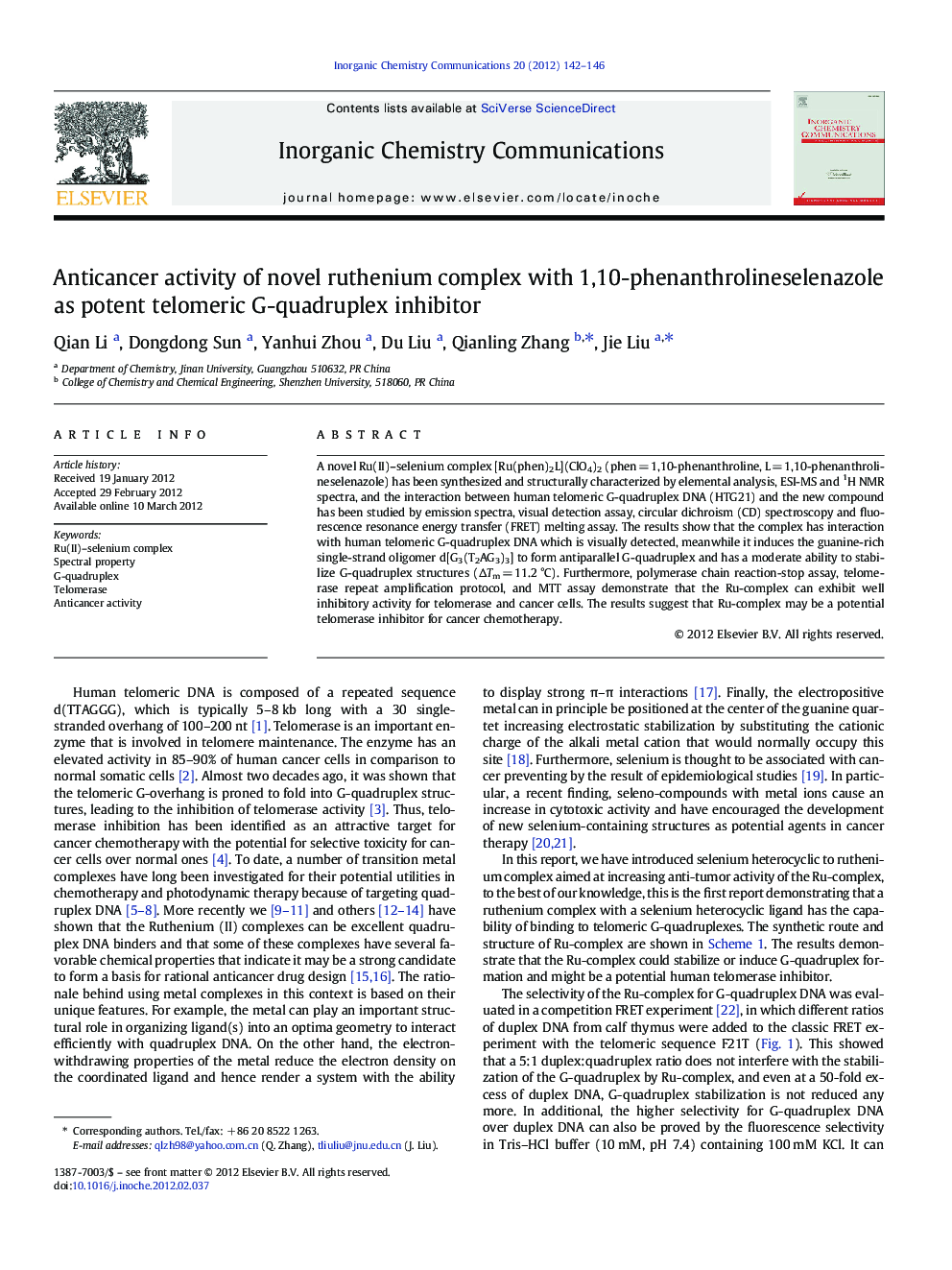| Article ID | Journal | Published Year | Pages | File Type |
|---|---|---|---|---|
| 1304099 | Inorganic Chemistry Communications | 2012 | 5 Pages |
A novel Ru(II)–selenium complex [Ru(phen)2L](ClO4)2 (phen = 1,10-phenanthroline, L = 1,10-phenanthrolineselenazole) has been synthesized and structurally characterized by elemental analysis, ESI-MS and 1H NMR spectra, and the interaction between human telomeric G-quadruplex DNA (HTG21) and the new compound has been studied by emission spectra, visual detection assay, circular dichroism (CD) spectroscopy and fluorescence resonance energy transfer (FRET) melting assay. The results show that the complex has interaction with human telomeric G-quadruplex DNA which is visually detected, meanwhile it induces the guanine-rich single-strand oligomer d[G3(T2AG3)3] to form antiparallel G-quadruplex and has a moderate ability to stabilize G-quadruplex structures (ΔTm = 11.2 °C). Furthermore, polymerase chain reaction-stop assay, telomerase repeat amplification protocol, and MTT assay demonstrate that the Ru-complex can exhibit well inhibitory activity for telomerase and cancer cells. The results suggest that Ru-complex may be a potential telomerase inhibitor for cancer chemotherapy.
Graphical abstractThe scheme is the structure of the Ru-complex and its activity in PCR-stop assay.Figure optionsDownload full-size imageDownload as PowerPoint slideHighlights► This is the first report demonstrating that a novel ruthenium complex with selenium binding to G-quadruplexes. ► The Ru-complex induces the oligomer d[G3(T2AG3)3] to form and stabilize antiparallel G-quadruplex. ► TRAP assay demonstrate that the novel Ru-complex can exhibit well inhibitory activity for telomerase and cancer cells.
